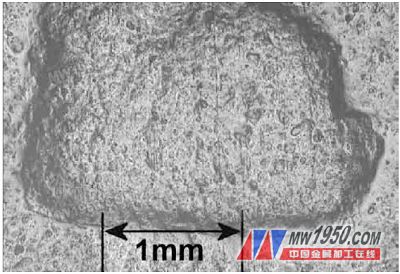Foreword Most of these methods are based on techniques for determining the level of impurities in the lubricant, rather than the degree of damage experienced by the rolling contact surfaces. The reasoning is that when the contamination content of the lubricant system is known, the damage level to the system components can be known. Based on field trials, some results have been obtained, linking the lubricant analysis method directly to life prediction. Therefore, a new life prediction model using direct, surface features was also proposed and its relationship to life test results was discussed. This model is an extension of the previous method, which links stress-based analytical methods to impurity indentation surface mapping methods with the aim of more accurately capturing the actual impurity damage that occurs in a particular impurity environment. Pollution characteristics Currently, equipment design engineers have many contaminated lubricant analysis tools that help them assess the harmful effects of impurities on mechanical wear. These tools use a variety of methods, including iron powder recorder methods, gravity filtration methods, atomic absorption spectrometers, and SEM (EDAX) spectroscopy to monitor overall loss of performance and analyze wear particles and contamination. The purpose of these methods is to understand the composition of the material and the characteristics of the lubricant contamination. In addition, particle size and metrology techniques can be used to determine particle size distribution and its concentration level. These techniques use manual microscopy methods and light scattering methods that can be used for automated direct metering. Most of the analytical methods mentioned here can be used for monitoring and understanding the evolution of equipment failure and the level of lubricant contamination for prediction and prevention. maintain. The ISO 4406 rating method is typically used to determine the level of contamination. Many engineers use this rating method and directly relate it to performance predictions. While the above techniques and methods help to understand wear mechanisms and wear rates, they are not effective in helping to assess the effects of impurity damage on the finished gear and bearing surfaces, which relate to the fatigue life of the material. Surface feature method In order to assess the detrimental effects of a lubricated environment contaminated by impurities on the surface, a direct method of using surface damage features has been developed. Nixon and Cogdell describe this method in the material. It provides a practical way to determine the effects of pollution and is named "Impurity Characteristic Analysis." Analysis of contaminated lubricants The following field studies are an example of the advantages of this analytical method, that is, this surface feature method can be used to evaluate equipment systems. In cooperation with the equipment manufacturer, the unit is tested with the sample lubrication system for a period of time. Standard methods for determining particle size distribution and concentration levels can be used to monitor pollution levels in actual user applications. After long-term use, the bearings are removed from these field devices. With the appearance inspection and surface feature method, the bearing surface is damaged by impurities and the damage level can be quantified. Table 1 shows typical particle size distributions and concentrations produced during use. Figure 1 shows typical features of a bearing surface that has been used for the same period of time. Figure 1: Microstructure of load surface of a typical bearing with dents A separate appearance comparison shows that the lubricant analysis does not indicate the expected level of surface damage. By comparing the data in Table 1 with the observed damage, it is clear that the lubricant sample does not predict any particles that are much larger than 300 um in size. However, the appearance of some indentation diameters close to 6 mm shows the presence of large particle impurities that are approximately 100 times larger than the size of the 300 um particles in the lubricant sample. This method of impurity imprint analysis, the detailed method mentioned in the literature, can be applied to more accurately describe its surface damage. The direct surface analysis method indicated that the predicted life reduction rate was 42%, and the lubricant analysis results did not show any significant detrimental effects. In addition, the surface analysis results are more compatible with the actual field performance. This example illustrates the need for surface characterization when correlating performance with pollution damage. It can be concluded that, at least for heavily polluted systems, a single lubricant analysis is not a reliable method in terms of bearing damage versus final field use. Next page OEM goods, Grinder Angle Cutter,Impact Drill Driver,Wood Working Tool,Demolition Breaker Hammer ZHENGYANG TECHNOLOGY CO.,LTD , https://www.supraone.com
A great deal of literature has been published on the major detrimental effects of impurity contamination on bearing performance, and many theories have been proposed for manufacturing processes, materials, and smelting methods that optimize bearing performance. This paper makes a practical comparison between some experimental performance results of different bearing products and the analytical methods used to predict and evaluate this performance, and makes a preliminary statement on the current quantitative methods for the impact of impurity contamination on bearing life. 